It has an essence of lemon that enhances greens, fish, meats, and just about anything it touches. Agrumato, or lemon flavored-olive oil has been one of my secret ingredients for years. Typically it's sold at specialty food stores or imported by fancy restaurant purveyors for chefs. If you've tasted it, you already know. Although it's not quite as potent, you can make a cheaper (but still good) version at home. Today I'll walk you through the process, which is easy to do.
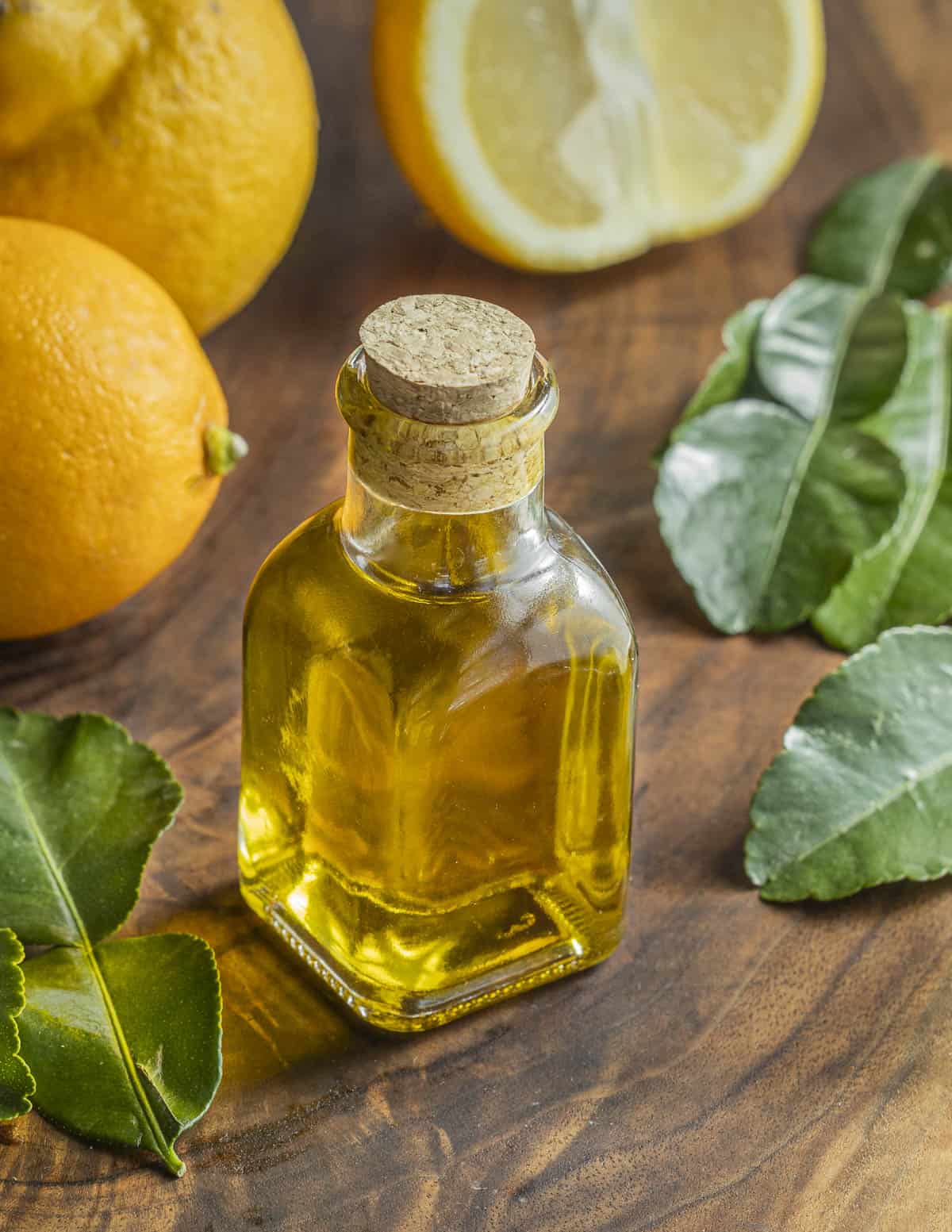
Agrumato is a traditional flavored olive oil made by cold pressing whole citrus fruits with olives in the frontoio (olive oil press / mill). It's most well-known from areas in Southern Italy where citrus is grown like Abruzzo.

This is one of the ingredients I would always keep in stock-at least a bottle or two. Just a few drops can transform a dish, but it isn't well known beyond the world of chefs and Italian food enthusiasts.
Olio agrumato translates roughly to citrus-flavored olive oil in Italian. Although lemon agrumato is probably the best known, it's also made with other citrus fruits like tangerines and blood oranges.
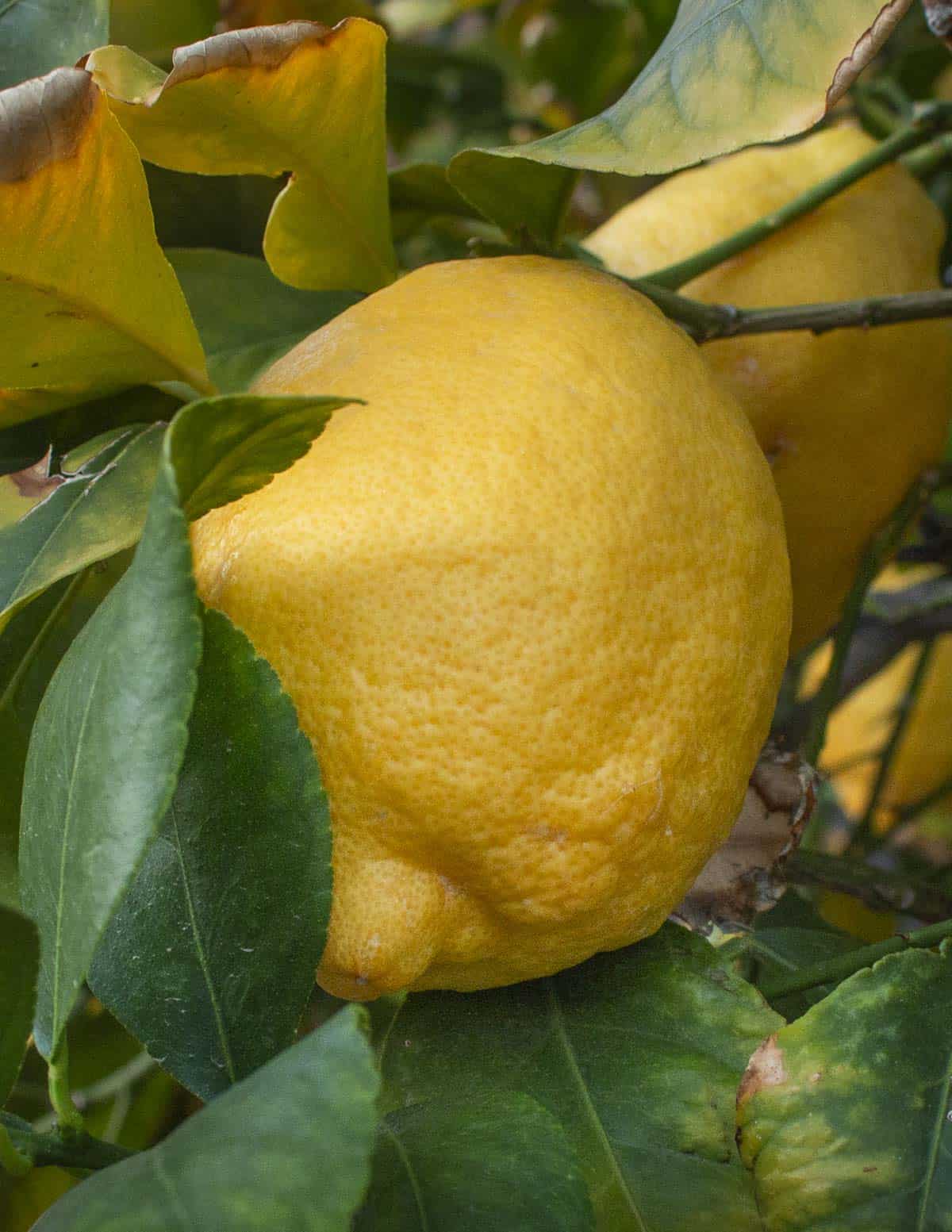
You've probably seen infused oils before-shelves lined with jars filled with everything from dried herbs to whole garlic bulbs. Those oils are usually crap, and you'll be lucky if the oil in them isn't already rancid, from my experience.
Real agrumato is very different. By pressing the whole fruit, the essential oil and juices infuse the olive oil naturally. The citrus flavor is potent, with a comparable price. You can also buy infused olive oils which are cheaper, for a reason.
How to Make Lemon Olive Oil
The homemade version isn't quite as potent as the real thing, but it'll get you close. It also doesn't cost $35 for a 16 oz bottle. It's easy to make: you'll need a Y-shaped peeler or a zester like a microplane, a mason jar, salt, and olive oil. I like to use half mild olive oil and half extra virgin, but you can make it with flavorless oils too.
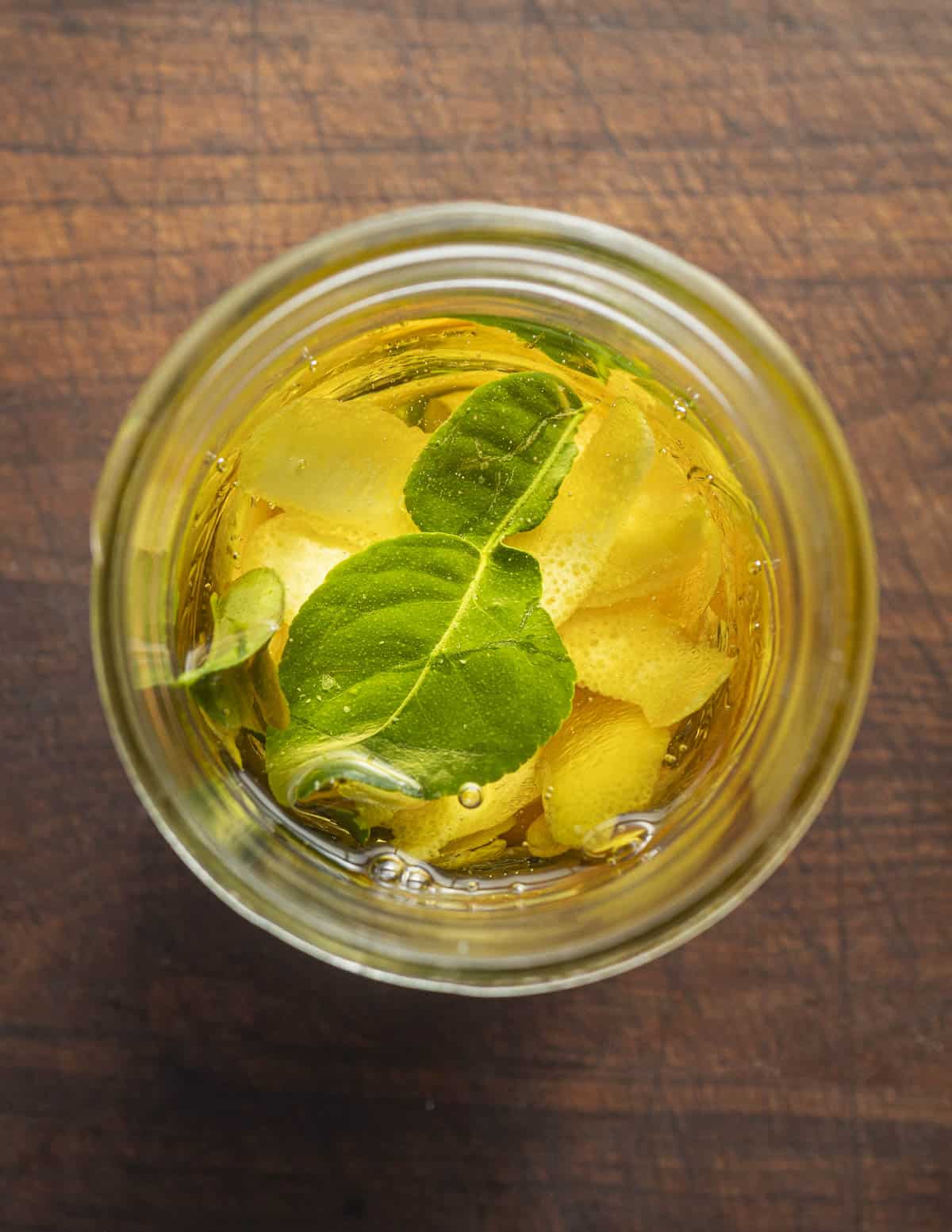
Depending on your equipment and how strong you want it, you can make it with grated citrus zest or strips of citrus peel. I've found the strongest infusion comes from vacuum sealing the oil and zest but that can be cumbersome-a mason jar works fine. I recommend starting with strips of zest as it has a higher yield.
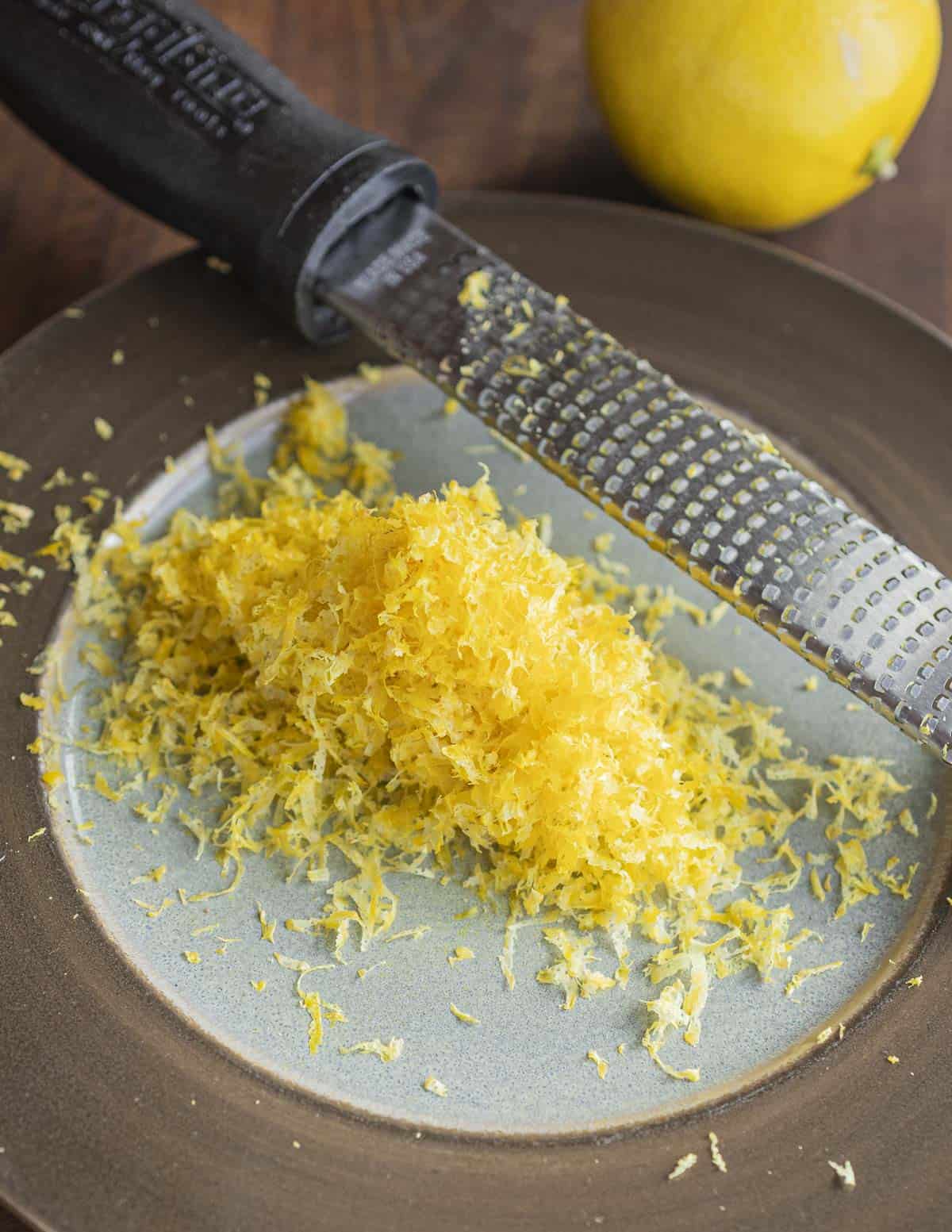
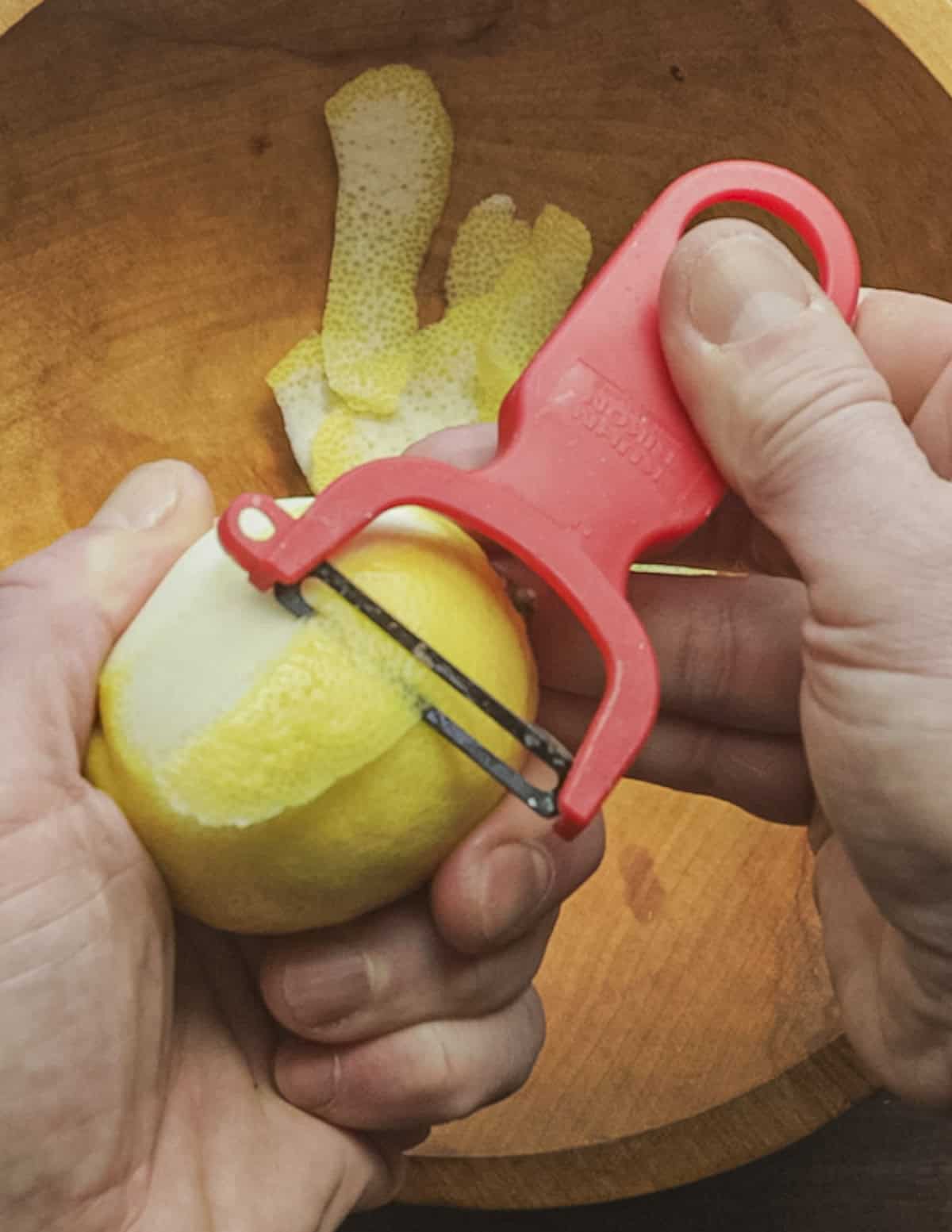
First grate or peel the lemons, then crush them in your hand with a good pinch of salt to release their oils.
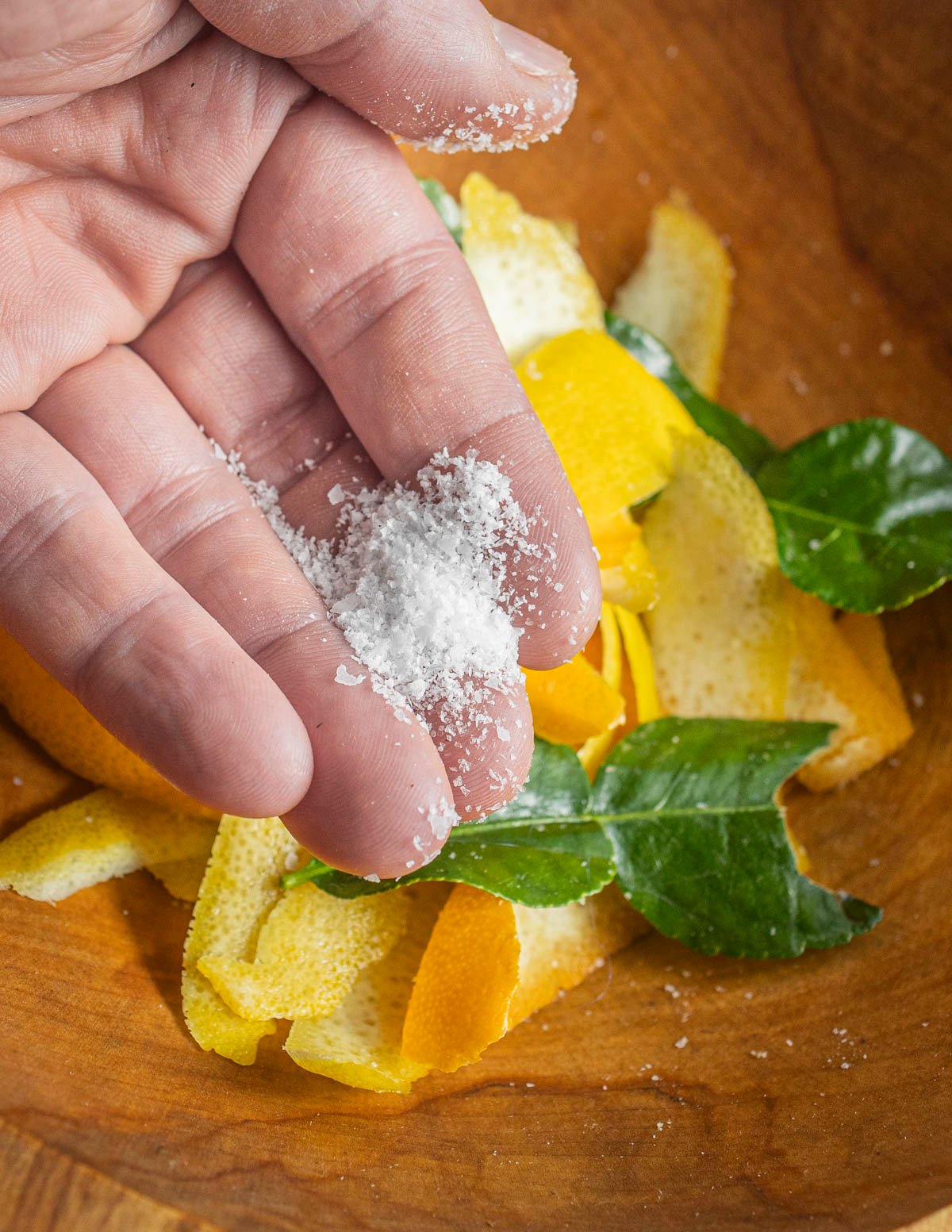
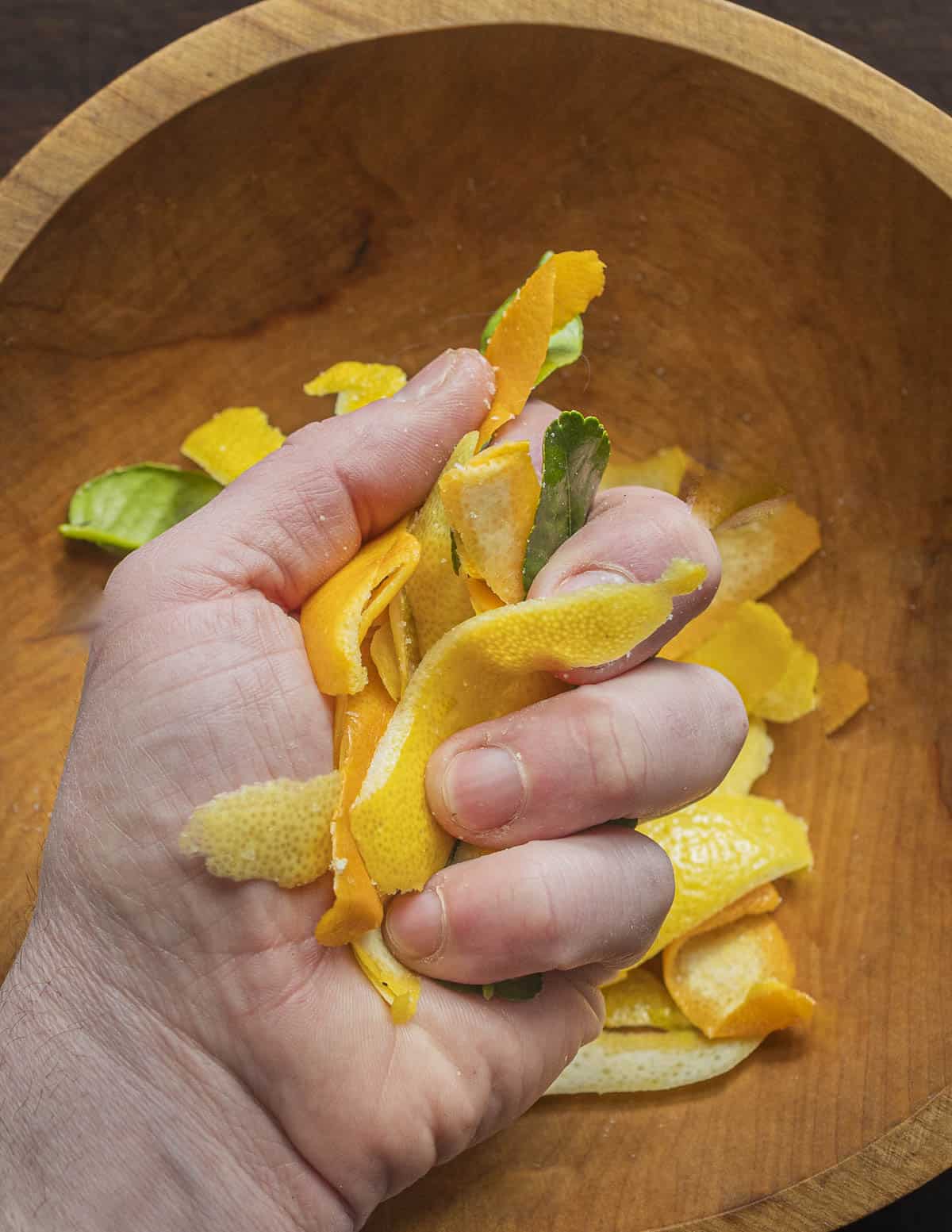
Put the citrus zest in a jar with a tight-fitting lid and leave in a cool dry place for a week. After a week, strain the oil. It can be held on the counter and will keep a decent flavor for a few weeks, but a refrigerator will keep the aroma the longest. If I'm feeling lazy I'll spoon some from the top of the jar.
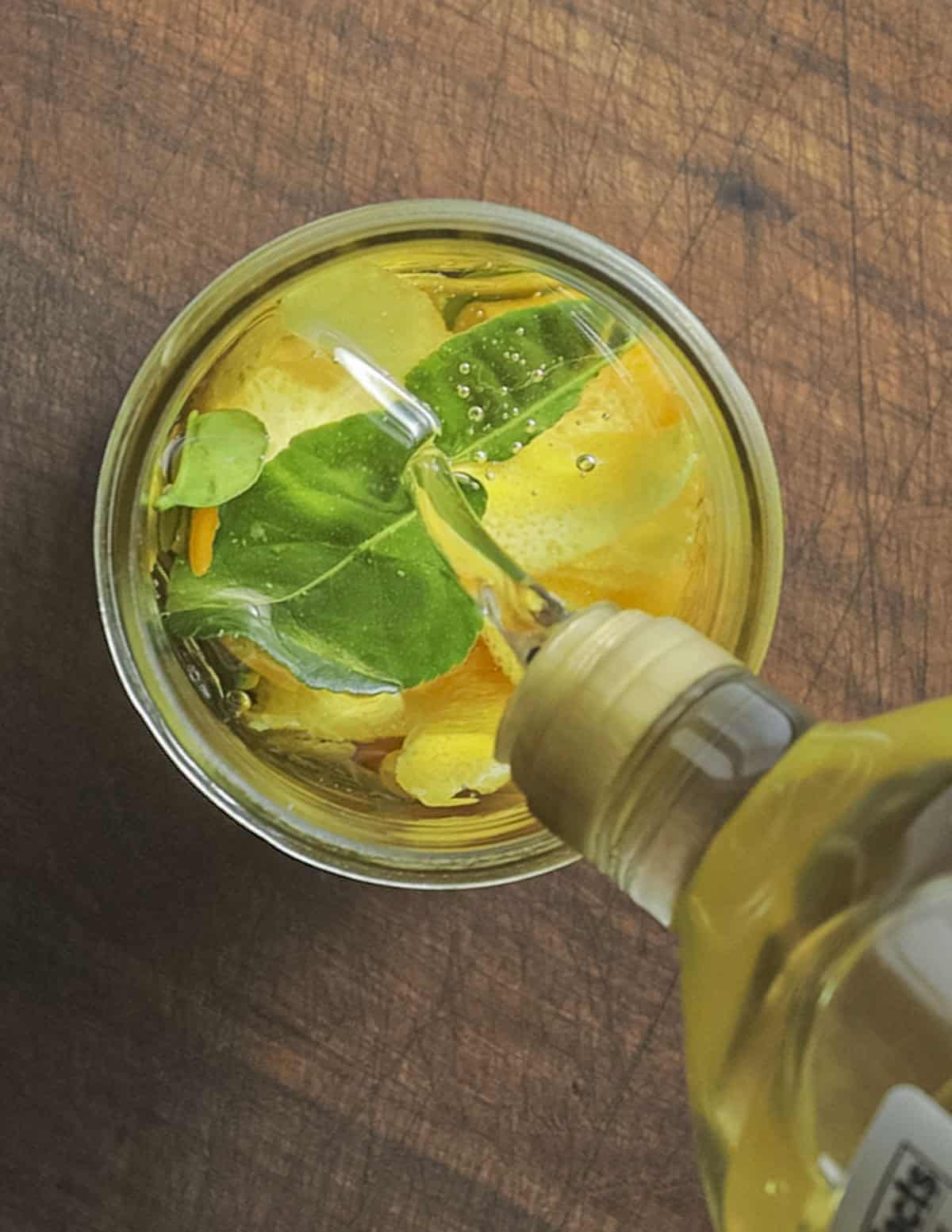
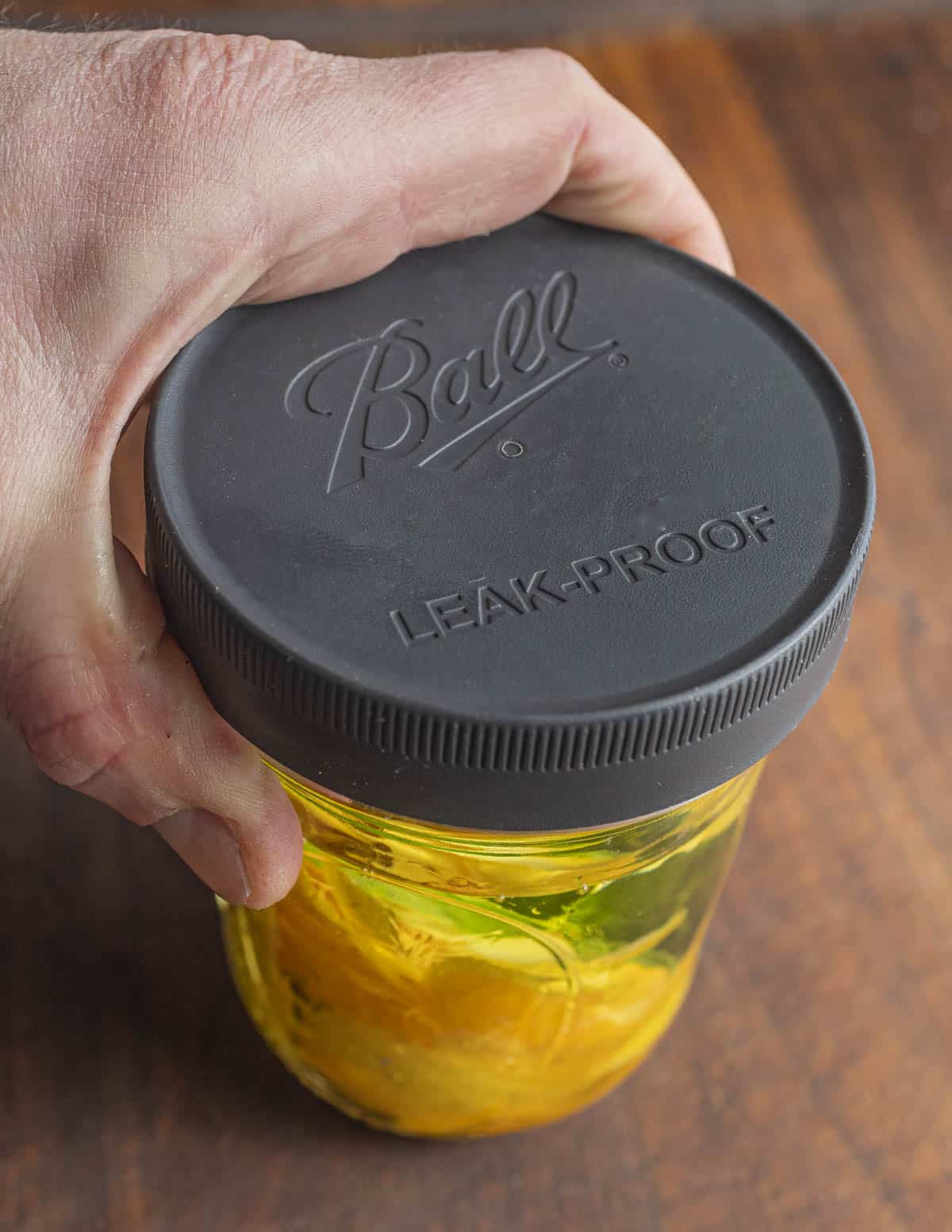
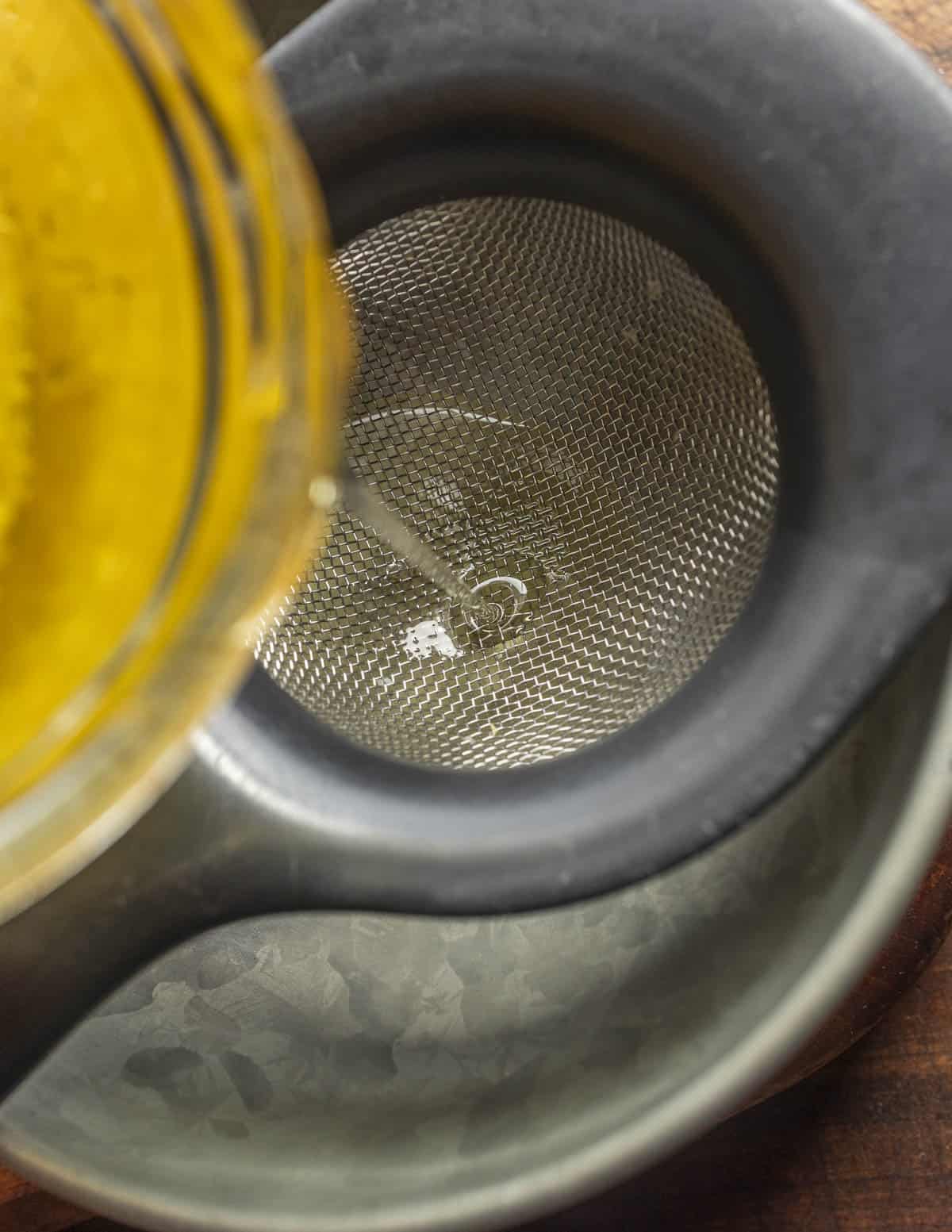
Chef's Tips and Uses
Whether homemade or purchased, the most important thing to know is that the oil is for drizzling on food before eating and not for cooking. It can be used in both savory and sweet recipes. With a wedge of fresh lemon on the side it's a simple, minimalist garnish for grilled meats and steaks.
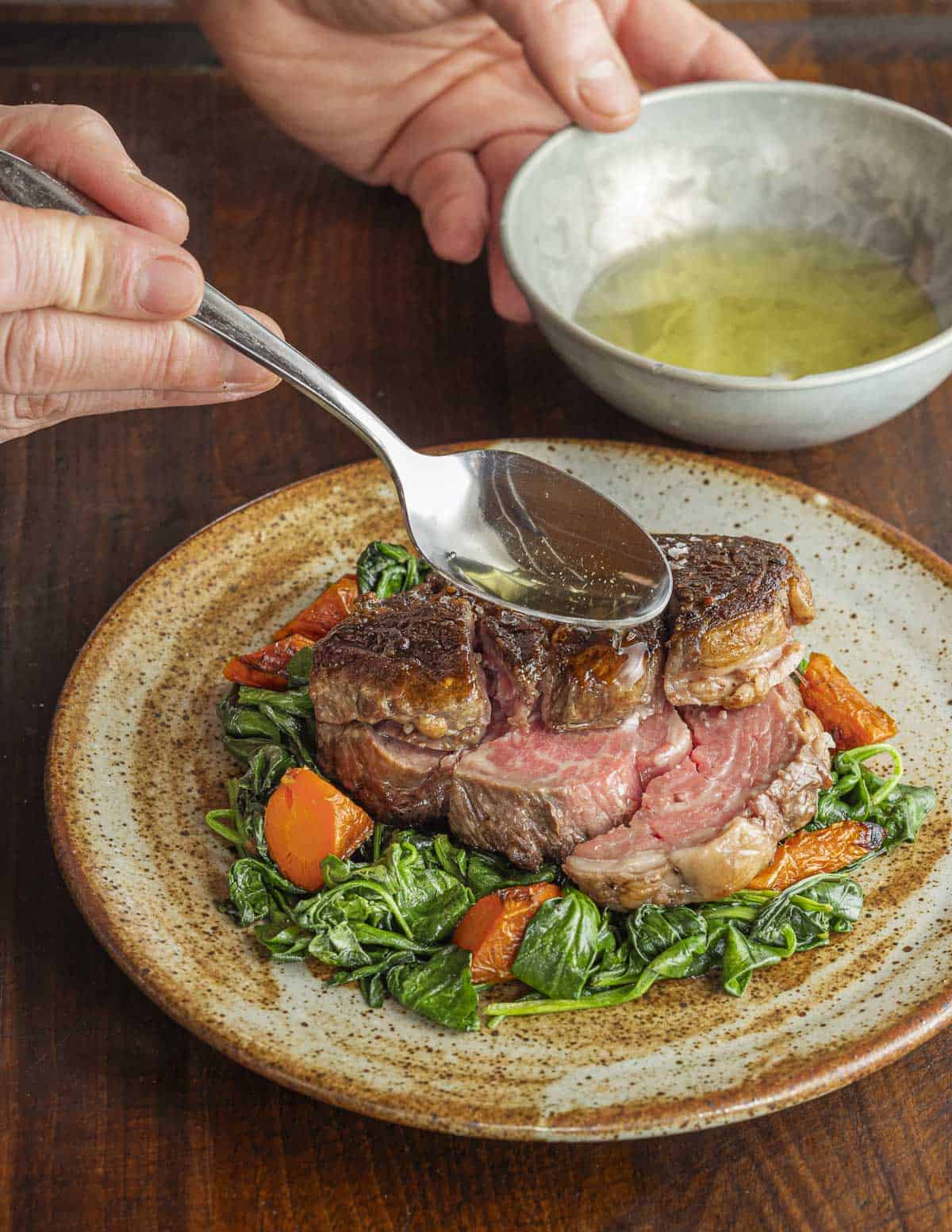
It's particularly good with fish and shellfish. In the image below I've used it in a marinade for shrimp with 1/16th inch diced meyer lemon zest, chili and herbs.
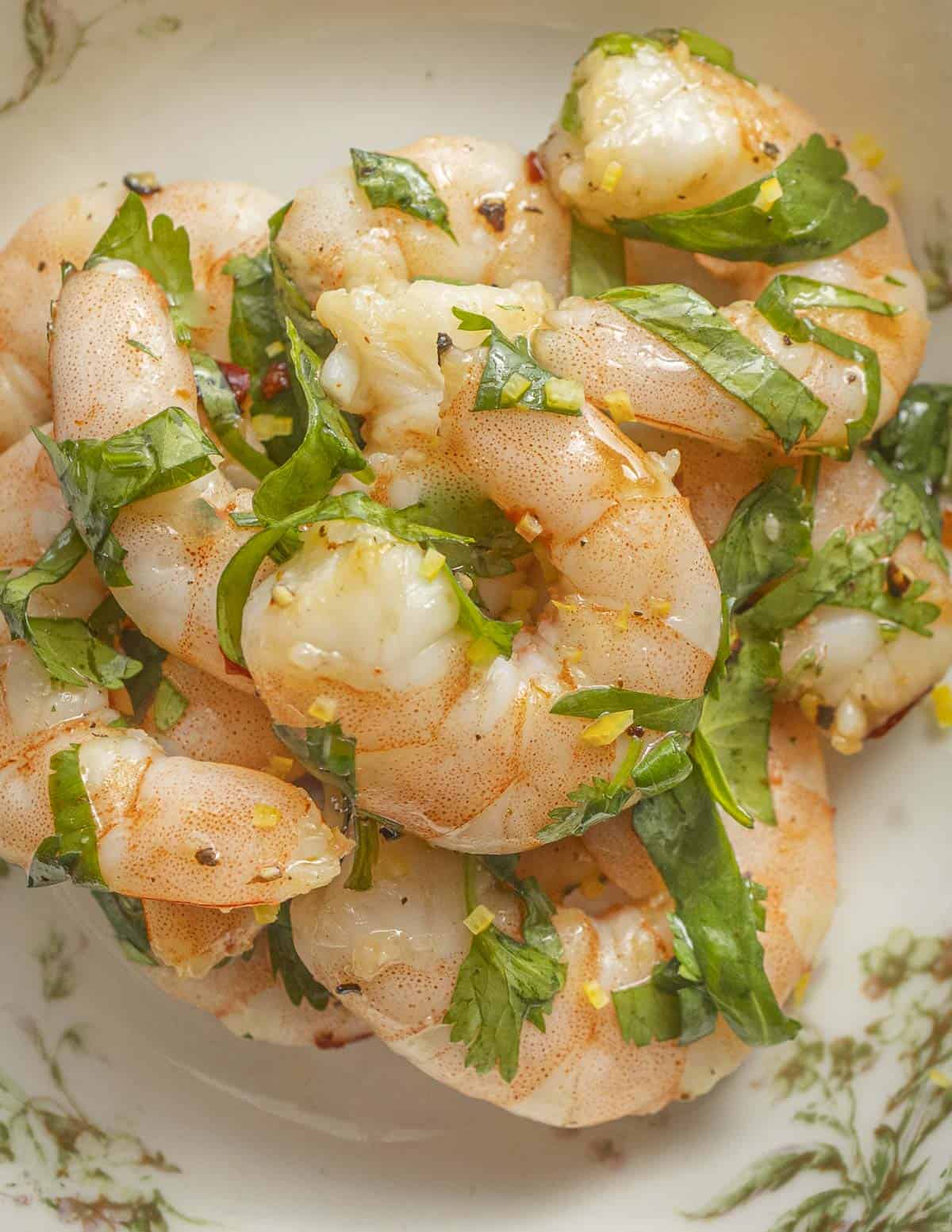
One of the simplest ways to use the oil is as a dip or marinade. It's great drizzled over just about any fruit or berry and also makes a refreshing dip for bread mixed with sweetened homemade vinegar. If you've made my fruit scrap vinegar definitely give that a try.
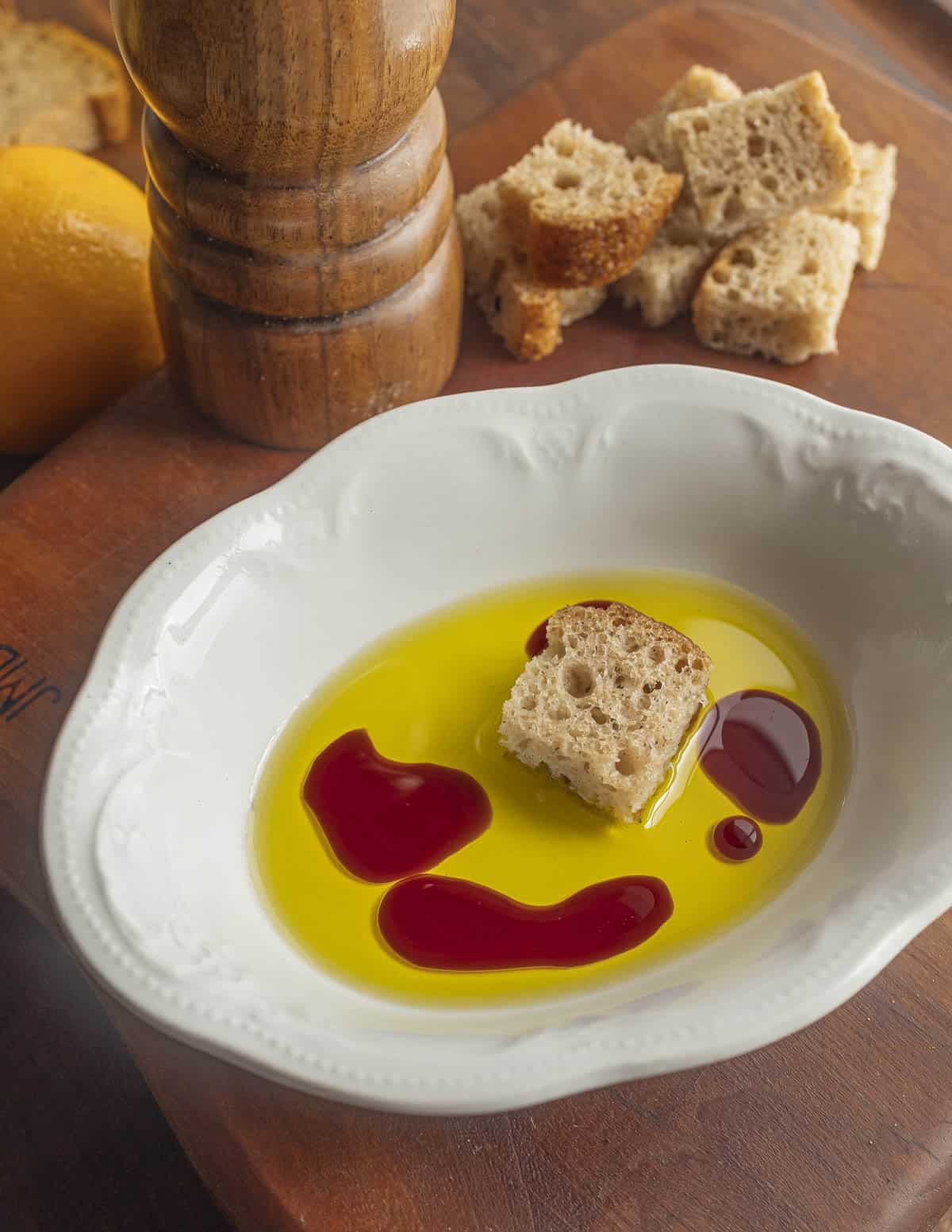
I'll be serving it at an upcoming charity dinner I'm with the homemade black raspberry vinegar sweetened with maple syrup. Besides bread, the oil, or a broken dressing made from it is a very good condiment for green vegetables.
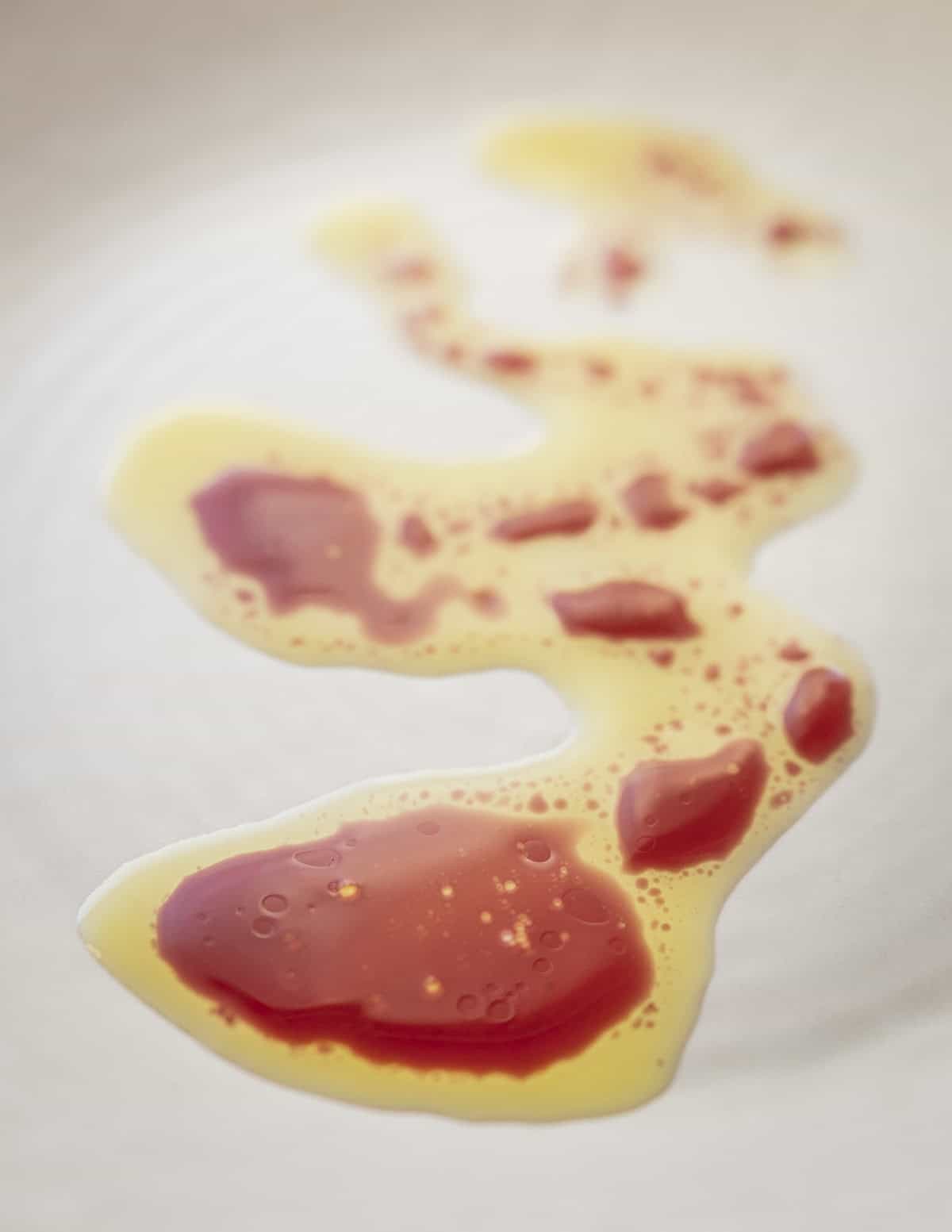
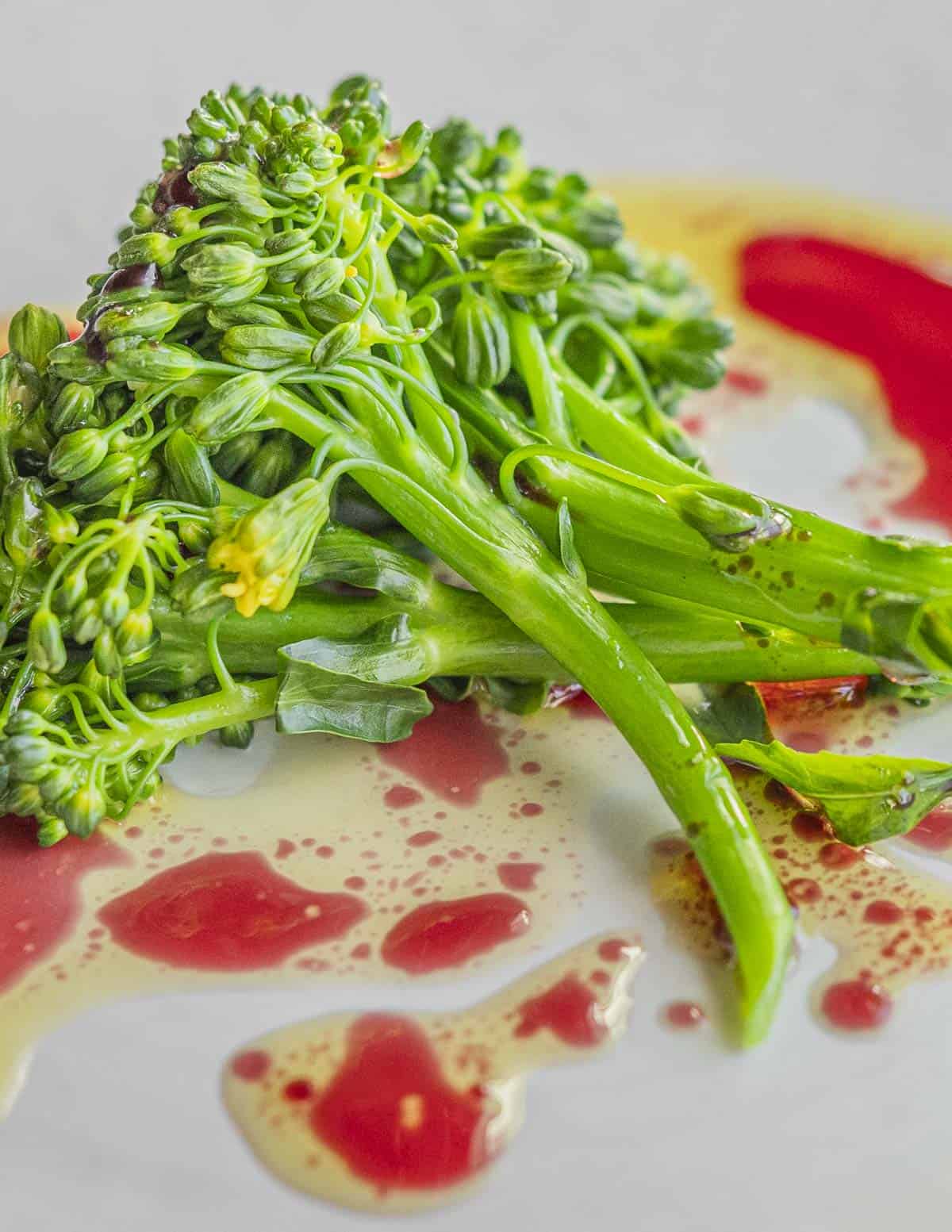
My favorite vegetable recipe I use it in is a spring fiddlehead fern salad with cucumbers, radishes and spruce tips. You can get a similar effect with peas, fava beans, green beans and plenty of other things.
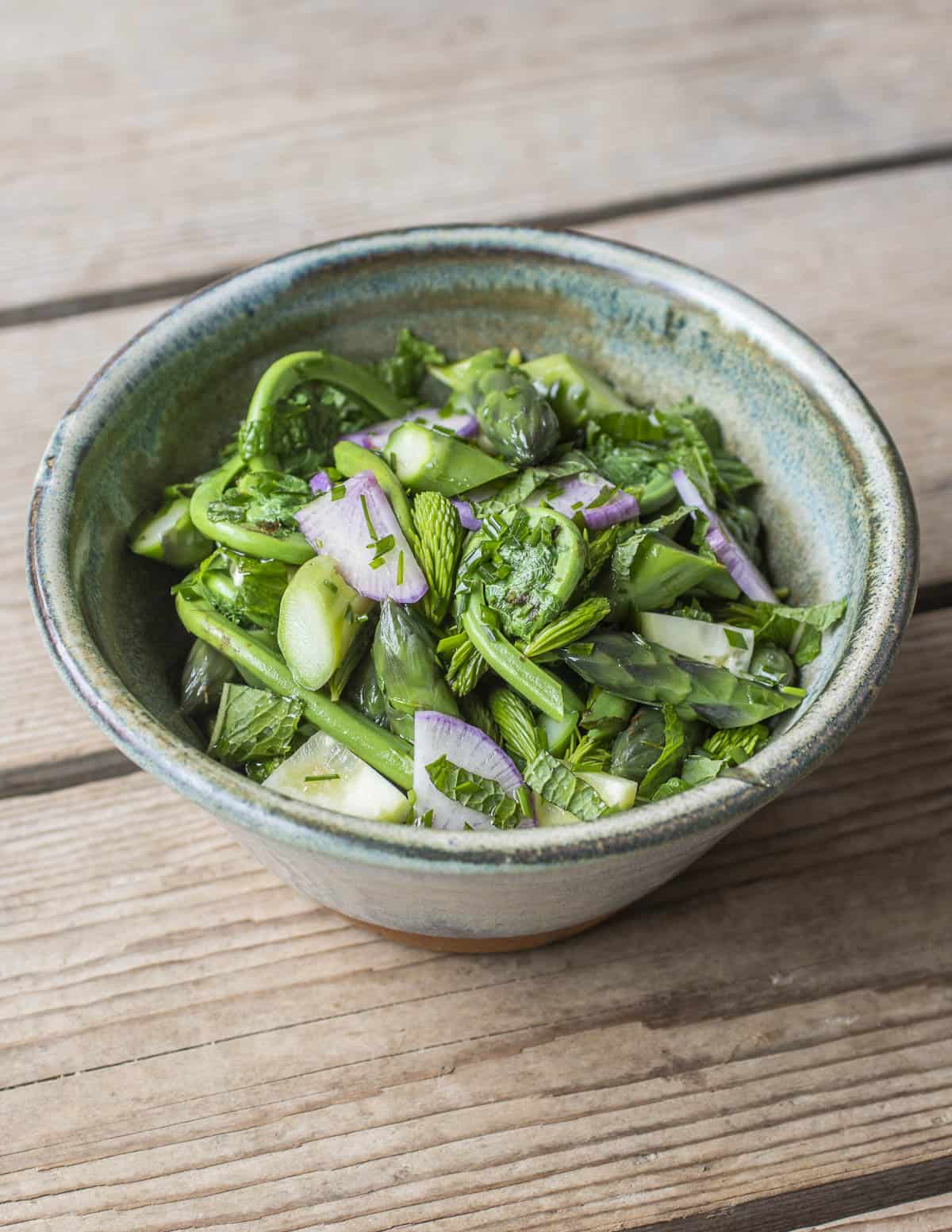
As it can be swapped for olive oil in just about any recipe where it's used raw there's lots of possibilities, from olives to ice cream. I'm sure you can find plenty of things to do with it.
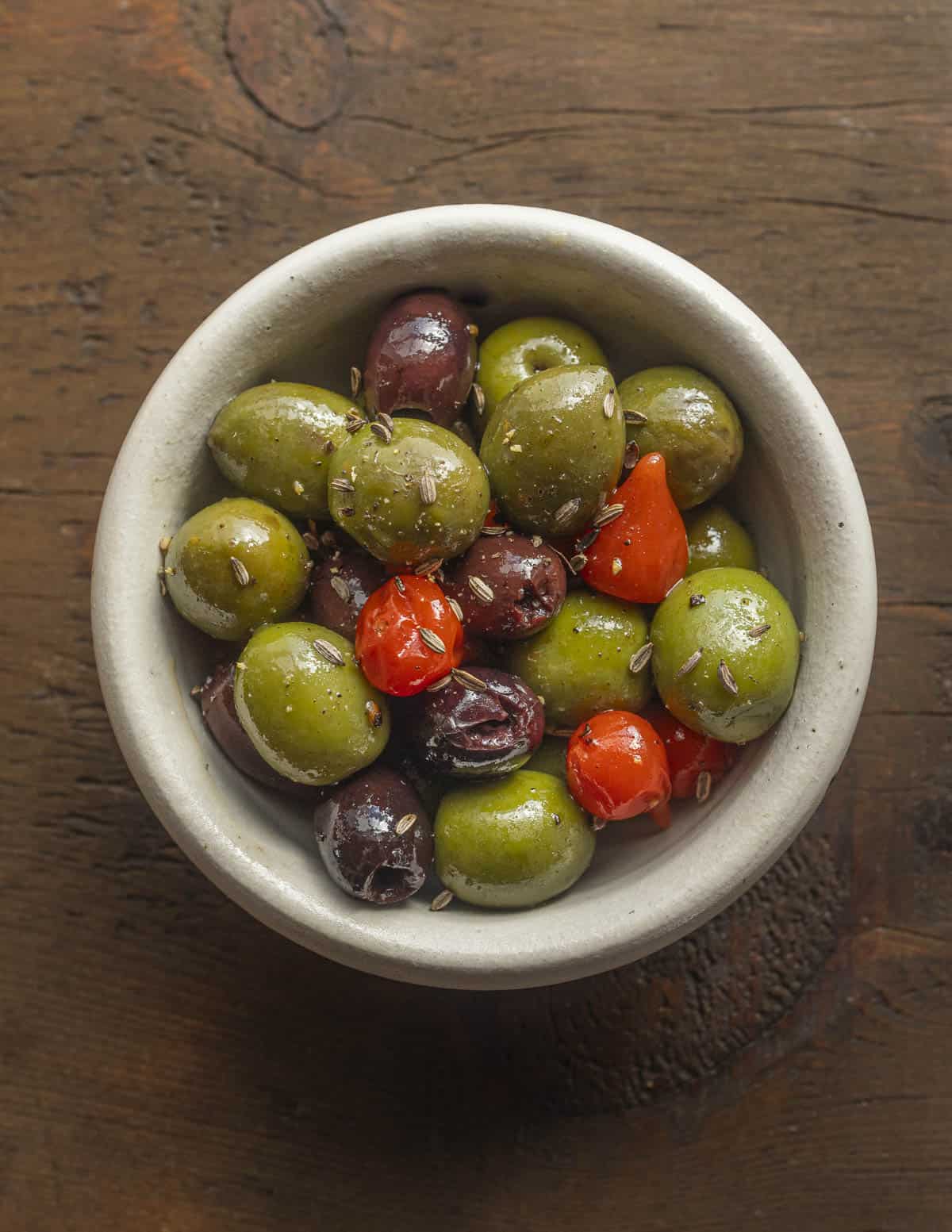
Related Posts
Homemade Lemon Olive Oil
Equipment
- 1 Pint or half pint glass mason jar with lid
Ingredients
- 5 Medium Lemons, preferably organic other citrus like tangerines or blood oranges can be used too
- 1 ¼ Cups Olive oil, or as needed to cover the zest a blend of half extra virgin and mild olive oil or another flavorless oil
- ½ Teaspoon Kosher salt
- 3-4 Fresh Lemon leaves optional
Instructions
- I'm outlining two methods here. Peeling the zest off in strips using a vegetable peeler requires more oil and makes a slightly weaker infusion but is what I recommend starting with.
- Wash and clean the lemons.
Using A Vegetable Peeler
- Pare off the zest in strips. Massage the zest and lemon leaves if using in a bowl with the salt to release their aroma.
Using A Microplane Zester
- Zest the lemons, then mix the zest with the salt in the jar you will use to make the infused oil.
Infusing
- Add the oil to the salted zest (it should be completely covered). Screw on a tight fitting lid and store in a cool dark place for at least 3-4 days before using. It's fine to taste it here and there during the process.
- I typically strain the oil after a week and discard the zest and leaves, but if you forget, or just want to spoon some oil from the top to sample it's fine. The salt acts as a preservative to prevent the zest from spoiling.
- The oil will keep a decent flavor on its own at room temperature, but will keep the best flavor (a month or so) in the fridge.
- Olive oil will solidify when refrigerated. Allow it to come to room temperature before using.
- The oil should be drizzled raw on foods before serving. See the tips and uses section for ideas.

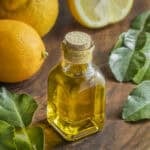
Andrea
I have a vacuum lid for my mason jars! Thanks for always providing such detail that we know how to adapt (and many times, why NOT to!).
Chris LaVenture
Hi, I have meyer lemon trees and also a really good vacuum machine. Can you go over the process using the vacuum?
Alan Bergo
Sure! Mix the salt and zest per usual. Then you just figure out a way to get the oil in the bag and seal it. You can freeze the oil and put the frozen puck in the bag and seal, or if you’re dexterous you can figure out a way to prop the bag up and just seal everything while it’s loose as it doesn’t have to be totally air tight.
Chris LaVenture
On a similar subject, I have noticed some white fungal growth on my current attempt to make preserved lemons. They have been fully submerged the whole time. Is it safe to eat or do I need to discard this batch?
Alan Bergo
Hi Chris. Typical preserved lemons should be buried in salt and the only way they would mold is if they're exposed to air.
Aurora
Do you think this would still work with just lemon leaves in sunflower oil? We've got lemon trees, grow sunflowers, and I'm about to build a DIY oil press, so fingers crossed it's a yes! Our lemon trees have managed to survive a few winters indoors, but fruiting's not in the cards in this climate.
Alan Bergo
Hi Aurora. No you want to use mostly zest here. The leaves are just for fun if you have a lemon tree.
Ellen
One more question: why is it that this oil is only for drizzling, not cooking?
Alan Bergo
Heating it or cooking with it can change the flavor. Same reason you wouldn't cook with an oil infused with herbs, etc.
Ellen
So is the second method using the microplane instead of the Y-peeler? A friend always sends me a box of Meyer lemons from her garden for my bday and this sounds like a great way to use them!
Alan Bergo
Yes if you microplane the same amount of lemons you can use a little less oil. Just the massaged peels works good too. If you have a big box and can afford to use more you can sneak extra zest in, just muddle it down in the jar.
Paul Ruszat
another serving suggestion - drizzle over the best vanilla ice cream you can find
Alan Bergo
Agreed
Anthony Damiano
You talked about how they press the lemons with the olives when they make this in Italy. Can we also squeeze the lemon Into the oil, or will that ruin it?
Alan Bergo
Hey Anthony, it's better to keep the separate. I won't say it will ruin it but it won't be the same. It's better to take a few spoonfuls from the jar and mix them in a separate, smaller bowl with some fresh lemon juice to spoon on things as needed.
Amy
I love all things lemon and I covet the but of oil covering my homemade fermented lemons, so this will be great!
Curious why the particular of Y shaped peeler? I have a ‘straight ‘ peeler. As long as one is careful re no pith, what is the difference?
Always like learning from a real chef!
Alan Bergo
Hi Amy, great question. The first thing to mention is that straight peelers always feel a little awkward-the Y-shape is much more comfortable and easy to use. The Kuhn Rikon brand specifically is basically standard issue if you work in a restaurant as they're cheap and durable. As the blade is carbon steel they also stay sharper, longer than straight peelers (OXO, etc) that have blades made from stainless steel as it's harder than carbon steel.
Mag
This looks heavenly. I will definitely make some and experiment with it. While dreaming of the real deal made in Italy by cold pressing whole lemons with olives for the divine unguent. My question is how do you know if your lemons have been coated with "appeel"? I don't want to inadvertently infuse my oil with that.
Alan Bergo
Hi Mag, yes conventional lemons can be sprayed with fungicide, wax, etc. I call for organic lemons in the recipe which is the easiest way I know to by-pass that. Slightly related: in my teens I learned vegetables can be waxed when I made parsnip / vegetable broth. It was like eating vegetable broth and chapstick at the same time.
Matthew Urish
Been a follower of yours for some time and have always enjoyed trying your recipes as I am also a forager. This oil would work nicely with smooth chanterelles and a touch of garlic and pepper. Keep doing what you are doing. Big fan.
Alan Bergo
Hey thanks Mathew.
Maggie Schneider
Mmmm, yummy. Vegetable broth with chapstick. That's amore! I too have always trusted organic lemons to be safe to eat, peel and all. But there is newish coating apparently being promoted by Bill Gates for many fruits and vegetables that are being sold as "organic". The problem is there is no way to know if this product (which is intended to prolong shelf life) has been applied to your edible or not. Plus it is impossible to scrub off. You have to find out from the distributor. Check on Organic Consumers Association to learn about "appeel". We need a clear strategy to avoid eating this. It is a challenge that may lead us lemon lovers to grow our own lemon trees.
Alan Bergo
Thanks for sharing that’s new to me. Fresh from the tree is ideal. That said, I feel fine buying organic lemons and using the peels for infusions or zest. With infusions you’re not even consuming the peel, and when using zest it’s a seasoning used in minuscule amounts. Not everyone who reads this website grows every single thing they eat or has access to it so I try to share the best, balanced recommendations representative of what most people will experience.